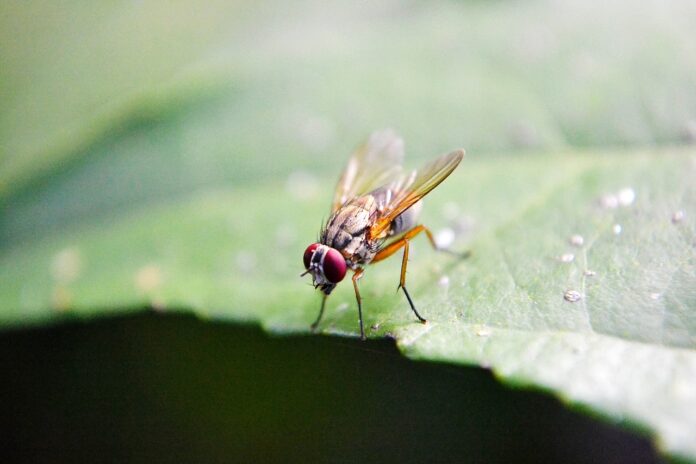Circadian clocks are self-sustained molecular oscillators controlling daily changes in behavioral activity and physiology. For functional reliability and precision, the frequency of these molecular oscillations must be stable at different environmental temperatures, known as “temperature compensation.” Despite being an intrinsic property of all circadian clocks, this phenomenon is not well understood at the molecular level.
A team of biologists headed by Prof. Ralf Stanewsky from the University of Münster, and in collaboration with teams at Dalhousie University in Canada and the University of Mainz in Germany, have now found an essential piece in the puzzle providing an answer to this question.
The scientists found a point mutation in the fruit fly Drosophila melanogaster that causes the circadian clock periods to prolong in response to temperature. It is found in a “period,” a central “clock gene.” Fly with this perI530A mutation exhibit a typical 24-hour sleep-wake cycle at 18 degrees Celsius. In contrast, the inner clock operates five hours slower and lasts 29 hours at 29 degrees Celsius. The period gene’s activity, or expression, in the brain’s clock neurons is similarly impacted by the lengthening of periods.
Usually, during 24 hours, the protein concerned (PERIOD) undergoes a slow chemical change; more precisely, it gets phosphorylated. It is degraded when the phosphorylation is at its peak. When fruit flies are active between 18 and 29 degrees Celsius, this mechanism is typically the same. The researchers demonstrated that at 18 degrees Celsius, phosphorylation normally happens in the perI530A mutant but declines as the temperature rises. The “PERIOD” protein is subsequently stabilized at higher temperatures.
The researchers used fruit fly mutants modified in the period gene they had created via contemporary molecular genetics techniques (CRISPR/Cas9 mutagenesis and homologous recombination). Then, it was determined whether the animals’ sleep-wake cycles and, consequently, their levels of running activity varied according to the surrounding temperature.
The so-called nuclear export signal (NES), which also appears in this form in the period genes of mammals and is involved in moving the PERIOD proteins out of the cell nucleus, is affected by the mutation that the team analyzed. This export from the cell nucleus had no previously known biological purpose. The latest work demonstrates that, again, only at higher temperatures, the mutation results in extended retention of the PERIOD protein in the cell nucleus of central clock neurons.
Ralf Stanewsky said, “We, therefore, assume that the export of the protein from the cell nucleus plays an important role in temperature compensation – at least as far as the fruit fly is concerned.”
Journal Reference:
- Astrid Giesecke, Peter S. Johnstone, Angelique Lamaze, Johannes Landskron, Ezgi Atay, Ko-Fan Chen, Eva Wolf, Deniz Top und Ralf Stanewsky (2022): A novel period mutation, implicating nuclear export in temperature compensation of the Drosophila circadian clock. Current Biology; DOI: 10.1016/j.cub.2022.12.011
